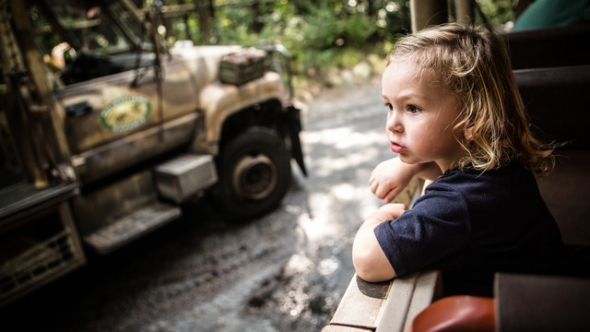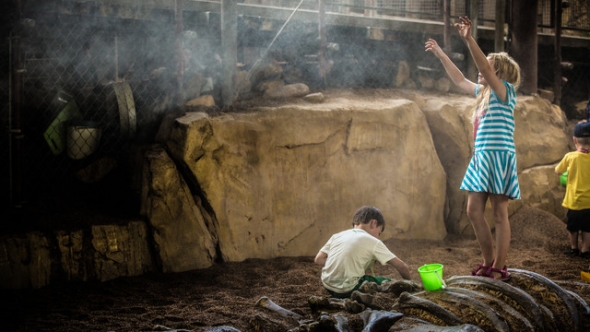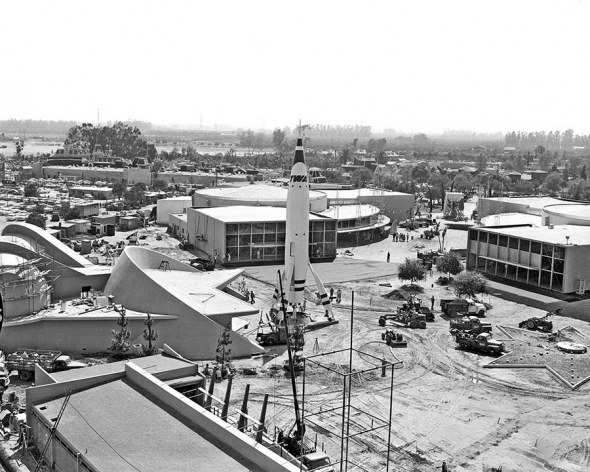
In the early 2000s, The Walt Disney Company opened a headline-grabbing new attraction at Epcot. The intention was to celebrate the space age, which had triggered some of Walt Disney’s visions for the Experimental Prototype Community of Tomorrow. A new ride celebrating the company founder’s love of conquering the unknown felt like a fitting addition.
Alas, even the best ideas sometimes collapse under the weight of reality. Disney invested $100 million into their new project, only to realize early on that they’d woefully miscalculated.
A few unfortunate souls discovered that Disney Imagineers are human, too. They can badly miscalculate the physical limits of the body, overestimating what a person will consider fun as opposed to, say, torture. Today, this ride includes countless warning signs, but in the early days, optimism abounded.
Since the inception of Epcot in 1982, no ride proved more controversial than Mission: Space. Here’s the story of what went wrong (and right) for this most divisive of attractions.
The thankless task of running a safe theme park
Image: Disney
Many theme park guests take for granted the complexity of their favorite attractions. Even the tamest carousels feature complicated machinery that’s a danger to anyone who touches it. That’s why such extreme safety measures are in place at your favorite amusement facility. The success of these warnings is astonishing from a mathematical perspective. The top five theme park corporations in the world claim global attendance of almost 300 million people annually.
How often do you read about a tragedy at one of them? Yes, they do happen, often due to human error from ride operators. The rarity of each event reflects that the standards in place are profoundly effective, though. And let’s not undersell the difficulty of what a theme park faces each day. Have you ever spent time on a playground? Kids are bundles of joy, the future, etc. They’re also tiny maniacs full of ineffable energy. Parents of small children look like they haven’t slept since 2006 for a reason. It’s the most difficult job on the planet.
Your favorite theme park faces the same peril each day, only with the heightened drama of needing to protect someone else’s children. At some point, you’ve babysat for someone else. You know from experience that it’s an entirely different sort of pressure. Screwing up your own kid simply means you’re human. Endangering someone else’s child makes you culpable.
The next time you’re at an amusement park, pick out the most annoying kid you see, the one whose parents have long since given up on the idea of trying to slow them down. You know the ones. Then, consider that the park operators have to provide enough safeguards to stop that unruly child from suffering an injury at their facility. Would you want the responsibility of that job? Of course not. The daily success of every theme park in returning uninjured children to their parents is a triumph of modern infrastructure. Even the best of the best is still imperfect, though.
The Walt Disney Company is the unquestioned gold standard in theme park management. With more than 130 million annual visits to their gates, they’re the big fish in a small pond that’s technically an oligopoly but closer to a monopoly. Still, they have their fair share of incidents. As far back as 1985, Disney suffered through an average of 100 lawsuits a year due to alleged theme park accidents. In today’s more litigious society, the numbers have surely grown.
Image: Disney
Disney is in a seemingly impossible situation. They’re positioned to fail due to the unpredictable circumstances of life. They can’t control when a single child acts irrationally, just as they can’t blame someone that young for behaving unpredictably. It’s what kids do. While Disney’s primary goal is to maximize profit, their simultaneous goal is to deliver a visitor experience so memorable that the guest will want to return at a later date.
The complexity of this dichotomy is almost overwhelming. Disney has to invest millions of dollars in new technologies that provide original attraction experiences to potential park guests. They also have to craft architecture that will support the enormous demands of the machinery powering. And they have to do this while guaranteeing the comfort and safety of their customers. Sometimes, those three goals border on mutually exclusive. Mission: Space is the seminal example of this precarious balance.
Embracing the world of tomorrow
Image: Disney
When Disneyland opened on that fateful day in 1955, one of the iconic landmarks stood out from the rest. It was a spacecraft, the proverbial Rocket to the Moon. Its presence aptly reflected Uncle Walt’s passion for space travel. The TWA Moonliner Rocket was simply the first of many appreciations his company would offer over the years.
A strange problem cropped up after Disneyland had been in business for 15 years. Once Neal Armstrong set foot on the Moon, traveling there no longer seemed that thrilling to guests. In 1975, Imagineers altered Tomorrowland to reflect changing goals. The updated version of their attraction was now entitled Mission to Mars. If that name sounds familiar, Disney created a movie of the same name 25 years later. One of its stars was…Gary Sinise. But I’m getting ahead of myself.
Mission to Mars the attraction demonstrates that passion for the space program continued inside the company even after Uncle Walt’s unfortunate passing. As the United States and Russia engaged in a Cold War, outer space became a priority, an otherworldly place where the greatest minds of each country could prove their superiority. The intrigue toward space travel had an unmistakable basis in politics, as was true during Walt Disney’s era, but even after the Berlin Wall fell and buzzwords such as perestroika and glasnost ended decades-old feuds, the love of exploration remained. The decline of communism seemed like the perfect time to renew mankind’s passion to achieve the world of tomorrow.




Comments
I like it, too, the mild side anyway. I like Horizons better, but I do also like Mission: Space.
1G, or "a G" is your normal weight. IOW, what you feel everyday you are on Earth. 2G is two times the force of gravity, thus twice your normal weight. Continue in the same progression. A "G" is not twice your weight.
Our family is big thrill seekers and love all types of rides. We have ridden both the orange and green one. Both made us all sick, the orange one made us sick for hours after we rode and although the green was less force it still made us all uneasy for a couple hours. It's a shame there isn't the option of riding it without it moving at all as I think more people would be able to experience it. It's a pretty cool ride if u take out the feeling sick after the ride factor.
Great article. I was just discussing this attraction with my wife. We both rode this back in the early 2000s, before they had the two intensity levels, and she immediately hated it. I thought it was neat but did not appreciate the feeling it left me with. I only recently went on the Green side and while neat I don't really see the point. If you think about the most popular movies, games, rides etc the one thing they all have in common is people always want to experience it again and again. Mission Space leaves me with zero desire to ride it again. It's kind of a one and done kind of ride and based on the low wait times for this ride I suspect that others think the same thing.
One thing is I hope the new millinium falcon ride isn't based on this ride design but based on the description and Disney's propensity to wanting to utilize one ride design for multiple attractions this wouldn't surprise me at all.
All in all, a good article. There is some speculation in there with regards to some things, and some facts that aren't quite right.
I want to point out some technical errors with the way the attraction operates. I'm not sure what these "lifts" and "spinners" you mention are. There are four separate centrifuges in the building, one for each flight bay. Each centrifuge, or MAC, has five arms, with each arm supporting two capsules, for a total of ten capsules per centrifuge. The MACs operate completely independent of one another.
Nothing is ever lifted. In fact, the floor drops out from under the capsules for the duration of the ride. On the More Intense side, MACs 3 and 4, the centrifuges spin at certain points to create G-forces all while the capsules pitch and roll. On the Less Intense side, MACs 1 and 2, the centrifuges do not spin (except for one very slow rotation to "rehome", leaving the capsules to handle all of the motion experienced during the ride. This was mostly a software change. They could easily convert 1 and 2 to be More Intense again in the future, if they chose to.
Also, depending on how you look at it, the Less Intense side does not really mark the first time Disney has offered two version of a ride. On the old version of Star Tours, and on Body Wars, "flight test" versions of the rides were offered on occasion that removed the motion aspect of the ride.